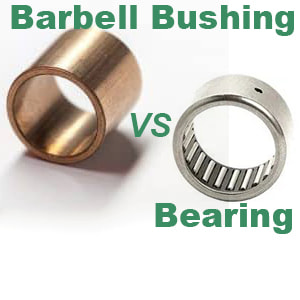How to Do a Push Press (Video Included)
How to Do a PUSH PRESS (Video Included)
The barbell push press is a systemic activity. In many related exercises, it not only helps to create the power of the shoulder, but also can exercise the stability of the lower body and core. Exercisers often incorporate the push press into their training program after they have mastered the overhead press.
Not only can weightlifters increase muscle mass and strength by using the push press, but athletes who require jumping power movements also find this exercise helpful for improving performance.
While this exercise has many benefits, the push press is a complex exercise that requires the use of several different muscle groups and skilled technique. Newcomers should work with a professional trainer or coach to find the correct form before adding weight.
Exactly How to Perform a Push Press
Targets: Complete Body
Equipment Needed: Barbell, Weight Plates
Level: Advanced.
Construction video for a Push Press
Action breakdown for Push Press
To prepare for the push press exercise, place a barbell on a rack in front of you or at your feet.
- Stand with your feet hip-width apart. Hold the barbell at shoulder height in front of your chest, so that it rests on your collarbones. Place your hands on the barbell, slightly wider than shoulder-width apart, with your hands facing forward. Your elbows should be relaxed, under the barbell, and slightly in front of you. Your legs should be straight, but not tight. Your knees and ankles should be straight and under your hips.
- Put the barbell in front of your chest, keep your torso tight, bend your knees, and sink slightly. Then push through your feet and begin to straighten your legs. Do this quickly to gain strength.
- As you fully extend your hips, push the barbell up. You must move your head back slightly to make room for the barbell.
- Extend your arms fully overhead, keeping your torso properly straight (you should not feel your chest stretching forward or your hips arching back). Once the bar has actually moved up above your head, move it back to its original position and slightly forward.
- Return the bar to the starting position to begin another repetition. Push press exercises must be done in one fluid motion. You intend to complete no more than 5 repetitions. If you can do more than 5, you are probably not using enough weight.
Tips for Push Press
The push press is an innovative exercise that enhances other basic movements. It is best to master the overhead press before attempting this exercise. The overhead press will help you build shoulder strength and confidence.
Because the push press involves many different strength and coordination movements, it is best to try this activity without weights. Once you understand the mechanics, gradually increase the weight.
Typical Mistakes
There are several common mistakes people often make when performing a push press. Most of these mistakes are related to placement, especially during the flexion and extension phase of the exercise.
Incorrect Starting Position
When preparing for the push press, be careful not to spread your feet too wide apart. It may feel safer to spread your feet further apart, but it is important to keep your feet about hip-width apart. Your feet should be parallel.
The push press is similar to other exercises that require you to hold the barbell at chest height. However, in the push press, it is important to keep your joints naturally relaxed so that your hands are facing forward when you start.
Incorrect Pressing Down
All the power in this step comes from pressing down before you lift the barbell overhead. There are many things that can go wrong in this important activity.
First, it is natural to lower your body into a squat instead of pressing down. In a squat, your hips move backward as your knees bend and your upper body moves slightly forward. However, in a press-down, your hips stay directly under your chest and head. Knees forward—this may feel strange, but you are not bending far enough that your heels feel like they need to leave the ground.
It is also possible that your back will arch during the flexion and extension. This is a sign that you are lifting too heavy a weight. If you cannot control the flexion and extension, reduce the weight.
Finally, some exercisers lean back during the push press, straining their lower back. Likewise, keep your head, chest, and hips in line as you bend your knees.
Lifting Early
While the push press should be a fluid motion, you shouldn’t begin to lift the barbell until your hips are fully extended. This means the barbell won’t remain at chest level until your legs are straight.
With dumbbells, if you find yourself always wanting to start the overhead press with your knees bent, use a training chart to provide movement cues.
Not Involving the Core
Keep your back and back strong during the overhead press. If you have a hard time keeping your core engaged, you may be lifting too heavy.
If you feel like you’re lifting the right weight but still find your back arching, double-check that you’re engaging your core during every phase of the exercise. Your core protects your back and helps prevent injury.
Too Many Repetitions
The push press isn’t specifically designed to help improve your endurance or overall fitness. You should only do one to five repetitions.
Safety Measures for Push Press
- The push press is a common exercise that you will see in almost any type of weightlifting gym or Crossfit gym. It is best to break down the activity and learn it carefully before attempting it.
- For safety reasons, learn the basic activities with a qualified trainer. Then (preferably) perform these activities in front of a mirror to ensure that you can check your form at each stage.
- The push press is an innovative exercise based on other basic movements. The push press can be performed with dumbbells, but you need to understand the movement of the barbell before performing the press.
- The push press exercise should be completed in one smooth movement. The press is similar to other exercises that require the barbell to be held at chest height. After mastering the press, consider performing the clean and jerk.
Benefits of Push Press
The push press, one of the weightlifting overhead press byproducts (WOPD), has a long history of use in weightlifting. For many years, the overhead press was considered the gold standard for measuring an athlete’s strength capabilities.
In recent years, the push press (both the lower body press and the overhead press) has been adopted by CrossFit gyms and weightlifting facilities across the country as a more effective way to build strength while also improving speed, core, and power for more powerful athletic performance.
A 2024 study published in Sports Medicine identified many other ways that the push press and other WOPDs provide benefits.
Reduced Risk of Injury
Learning the push press helps reduce the risk of injury during training and weightlifting performance.
For many weightlifters and CrossFit athletes, learning the push press is a precursor to a similar movement called the clean and jerk—an essential component of the widely used clean and jerk exercise. According to multiple studies, the clean and jerk is considered one of the most complex and challenging skills in modern weightlifting, and the movement is the part of the clean and jerk with the highest failure rate among weightlifters.
By building a solid coordination and strength foundation through the push press, CrossFitters and other athletes can reduce their risk of injury.
Motor Control and Coordination
It has been determined that the press is superior to the WOPD exercise and is superior to other well-researched upper body exercises in developing motor control and coordination. The exercise requires the lifter to transfer force from the lower extremities to the upper extremities through the kinetic chain, creating a powerful stimulus to strengthen the muscles of the upper and lower extremities.
In addition, the exercise requires motor control and coordination of the trunk and lower extremity muscles to support and transfer force while standing.
The press is considered more suitable for explosive movements and movements than the bench press because the technical challenge requires speed, acceleration, timing, and coordination.
Enhances Strength Development for Sports
Because the push press requires high levels of maximal strength and power, and the movements are mechanically similar to many movements required in sports, this exercise can be used to rapidly produce stress, maximal force, and power in sports, especially those involving sprinting, jumping, and leaping. These include basketball, football, lacrosse, and others.
Basically, when athletes learn to use the push press to combine ankle, knee, and hip extension with speed and pressure, they are more capable of performing on the field.
Additionally, other research suggests that strength exercises like the push press are essential for building core strength so that force can be transferred from the lower to upper body in sports such as football. Research suggests that exercises like the plank put the body in a non-functional, fixed position and may not be very effective.



